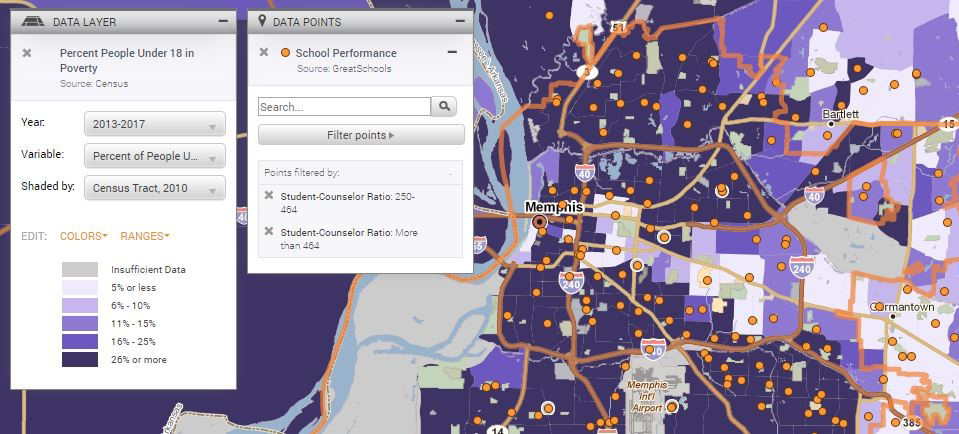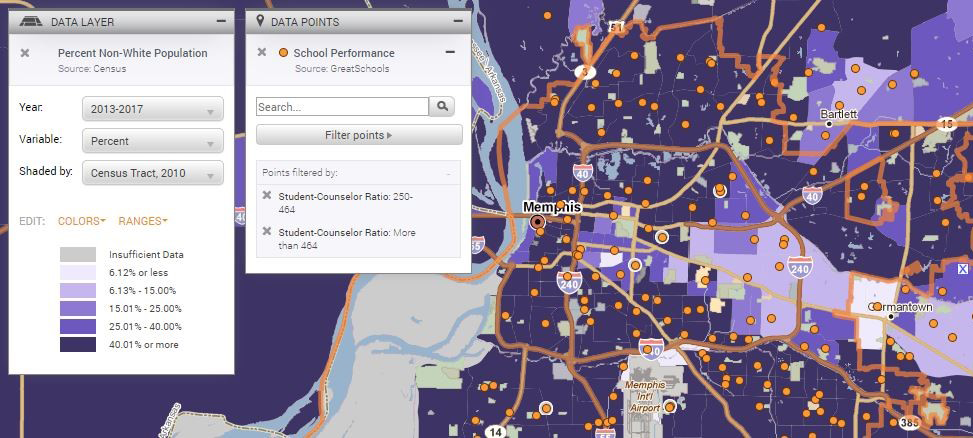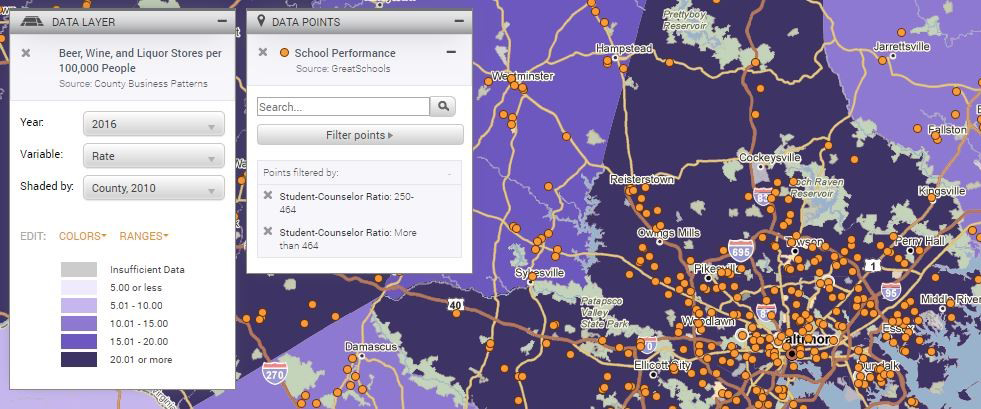Setting Students Up for Success with the Support They Need

Across the U.S., the need for public school counselors is acute, and yet counselors are scarce. Nearly one in five students don’t have access to a school counselor in their school at all. And for those that do, there are often not enough counselors per student to provide the services they need. As states grapple with how to overhaul outdated and often inequitable public school funding formulas to ensure that the next generation is prepared to enjoy productive lives, understanding where access to school counselors is insufficient is essential.
Although the recommendation from the American School Counselor Association (ASCA) is 250 students to 1 counselor, the ratio in many schools far exceed that benchmark, often stretching counselors thin. With the average student-to-school counselor rate in the US at 464 to 1, counseling services are scarce.
And access to school counselors is often inequitable. Schools serving the most students of color or the most students from low-income families have less access to school counselors than schools serving white and middle to upper income families. Looking at maps of low-income and non-white populations overlaid by schools with higher student-to-counselor ratios, the pattern of need for additional counseling supports is clear.
The School Counselor’s Role: Student Safety and Success
School counselors are no longer just helping students get into college, though they do that, too. They are being called upon to support students in many aspects of their lives, from helping them to navigate safety in and out of school, to providing mental health support. Evidence shows that enough school counselors can result in better outcomes for students, fewer disciplinary actions, and a safer school environment.
At a time of elevated suicide rates and psychological distress among students, school counselors trained in working with children with trauma are essential. Trauma-informed school counselors know how to identify students affected by traumatic events and can provide counseling and support to these students.
Interventions of this kind can improve outcomes for students and reduce concerns around safety and security, especially with a rise in school violence including school shootings. If counselors have too many students for which they’re responsible, they’re less likely to be able to assess all students and meet their needs.
There are a number of ways to identify areas where students may be exposed to greater violence and, as a result, trauma. Studies show, for example, that areas with greater access to liquor stores are prone to higher rates of violence. Using liquor store prevalence, we can see where counselors may be in higher demand due to probability of a higher incidence of trauma. Looking at schools with scarce counseling resources, it’s clear which schools could improve student outcomes by funding counseling services.
The role of the state is crucial in school funding priorities because most states control school funding through their own formulas. To redesign antiquated funding models, state government officials, such as Maryland’s Kirwan Commission, are currently making recommendations to try to balance the playing field for kids to benefit across the state. Such recommendations illuminate the need to address new and emerging realities faced by students today such as early achievement gaps, trauma, mental health issues, and college readiness.
As states update their funding formulas to more evenly and equitably distribute resources to public schools, ensuring supports such as school counselors are an important part of the equation for state education leaders.
For more information related to the resources available in schools in your area, check out PolicyMap’s school performance data, from GreatSchools to see new indicators such as student to counselor ratios, average teacher salaries, certified teacher rates, and more. This data, available to PolicyMap subscribers, can be found in the Education menu, under “School Performance.”
Additional Resources about School Counselor Shortages
Fact sheet about counselor shortage: https://s3-us-east-2.amazonaws.com/edtrustmain/wp-content/uploads/2019/01/30161630/School-Counselors_2019_V7.pdf
A case for more student counselors: https://counseling.online.wfu.edu/blog/do-schools-need-more-counselors/
Governing: https://www.governing.com/topics/education/gov-school-counselor-crisis.html


